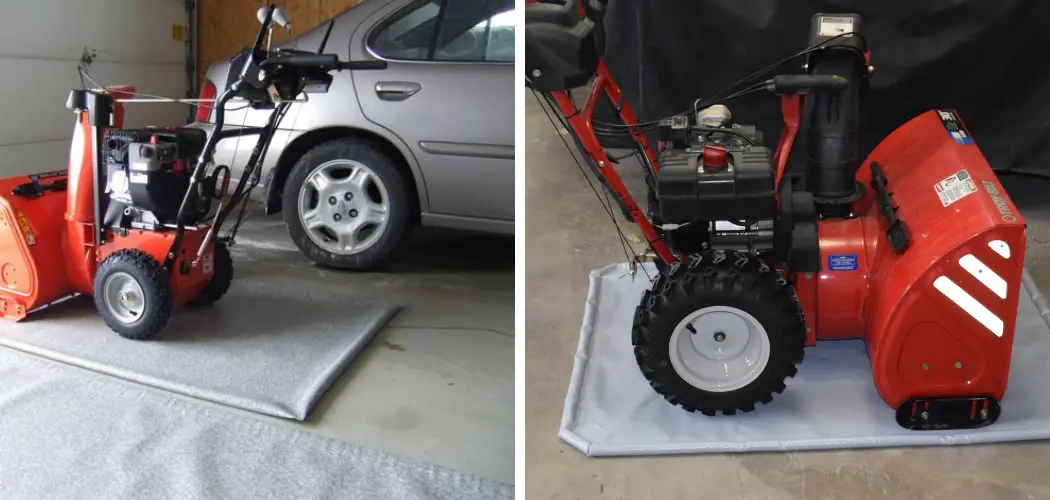Storing a snowblower in your garage is a common practice for many homeowners, especially in regions where winter’s icy grip necessitates these essential machines. However, ensuring that your snowblower is properly stored in the garage is not only about saving space but also about protecting your investment and preparing for the next snowfall efficiently.
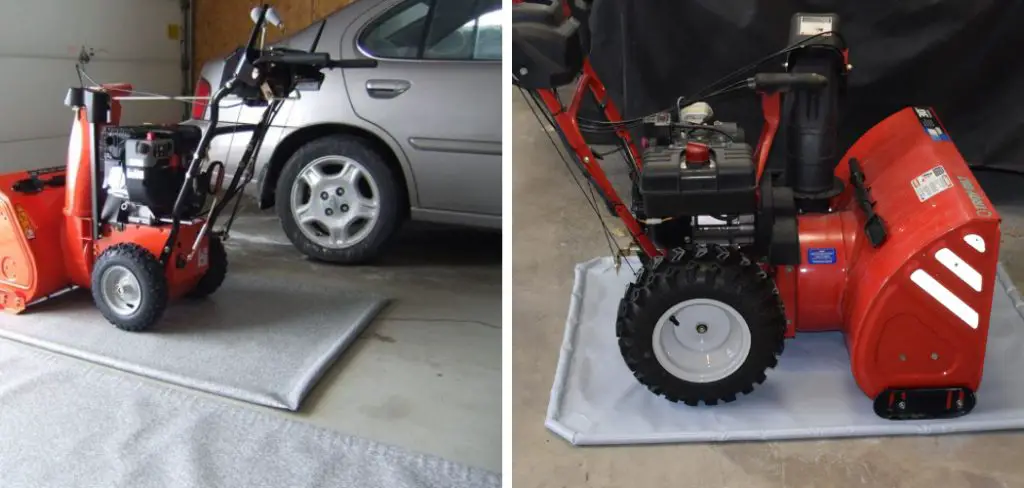
In this article, we’ll explore the ins and outs of how to store snowblower in garage effectively, offering valuable insights and practical tips.
From preparation steps like cleaning and maintenance to the ideal storage location, covering, and fuel considerations, we will guide you through the essential aspects of winter equipment storage. Whether you’re a seasoned snowblower owner or a first-time user, this guide will help you keep your garage organized, your snowblower in peak condition, and your driveway snow-free when the next storm hits.
Importance of Proper Snowblower Storage
Proper storage of your snowblower is crucial for its longevity and performance. After the winter season, many people tend to forget about their snowblowers and leave them in the garage without proper care. However, this can result in damage or deterioration of parts, leading to costly repairs or even replacement.
By properly storing your snowblower, you can ensure that it is ready to use when the next winter season comes around. Additionally, it can also save you time and money in the long run.
Here are some key reasons why proper snowblower storage is important:
Prevents Corrosion
Snowblowers are often exposed to salt, dirt, and other debris while being used during the winter season. These elements can cause corrosion and damage to the metal parts of your snowblower if it is not properly stored. By storing your snowblower in a dry and clean environment, you can prevent rust and extend the lifespan of your machine.
Protects from Moisture
Another important aspect of storing your snowblower properly is to protect it from moisture. When left in a damp or humid environment, moisture can seep into the engine and other parts of your snowblower, leading to rust and damage. It is important to drain all fuel from the tank and run the engine until it stops before storing it in a dry place.
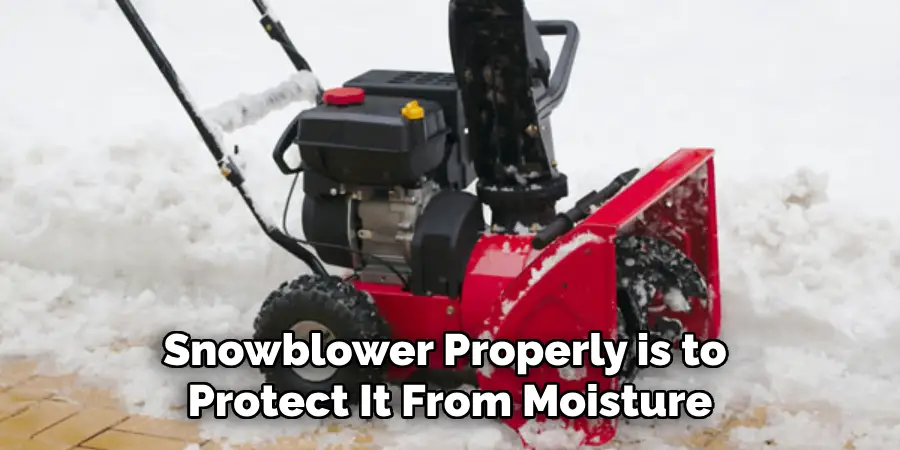
Maintains Sharp Blades
Storing your snowblower with its blades intact can cause them to become dull over time, making it less effective in clearing snow. Proper storage includes removing and sharpening the blades, ensuring that they are ready for use when winter comes around again.
Saves Space
Proper storage of your snowblower also means keeping it organized and out of the way in your garage or shed. This not only saves space but also keeps it safe from any potential damage caused by being in the way of other tools or equipment.
10 Methods How to Store Snowblower in Garage
1. Clean the Snowblower
Before storing your snowblower in the garage, it is important to clean it thoroughly. Remove any dirt, debris, and old oil that may have accumulated on the machine. This will help to prevent rust and corrosion from forming while the machine is in storage. Additionally, be sure to empty out any fuel or oil that may still be in the tank.
2. Inspect for Damage
It is also important to inspect your snowblower for any damage before storing it away. Look for cracks or breaks in the plastic housing or metal parts that could cause problems when you go to use it again next season. If you notice any damage, make sure to repair it before storing your snowblower in the garage.
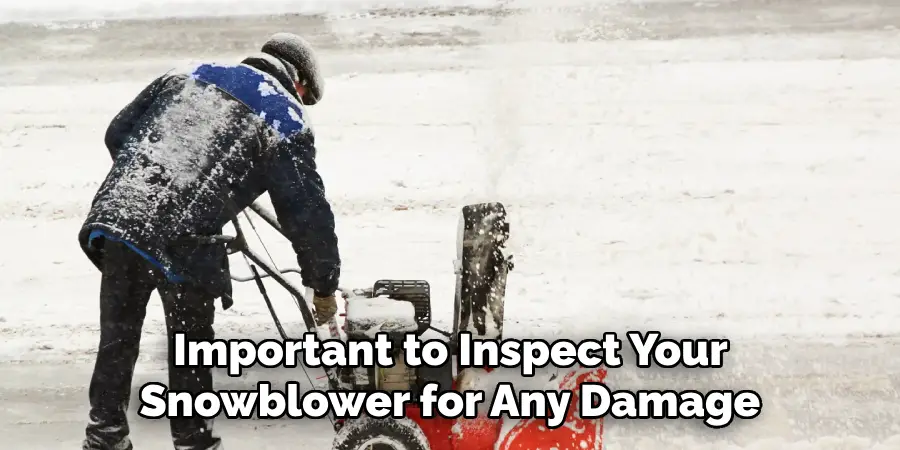
3. Disconnect Battery
If your snowblower has a battery, make sure to disconnect it before storing it away in the garage. This will help to prevent corrosion and ensure that no power is being drawn from the battery while not in use. Additionally, check the battery terminals for any signs of corrosion and clean them if necessary before reconnecting them when ready to use again next season.
4. Fill with Oil
If your snowblower has an oil reservoir, make sure to fill it up with fresh oil before putting it away into storage in the garage. This will help keep all of the moving parts lubricated while not in use and reduce wear and tear on them over time. Additionally, check all other fluid levels (such as coolant) and top them off if necessary before putting them away into storage for winter months ahead of time.
5. Cover Machine
Once you’ve cleaned and inspected your snowblower for damage, make sure to cover it with a tarp or plastic sheeting before storing it away in the garage for winter months ahead of time. This will help protect against dust accumulation and moisture buildup while not in use, which can lead to rust formation on metal components over time.
6. Place on Blocks
When storing your snowblower in the garage, make sure to place it on blocks or another raised surface so that air can circulate freely around all sides of the machine. This will help prevent moisture buildup underneath the machine, which can lead to rust formation over time.
Additionally, placing blocks underneath will also ensure that no weight is placed directly onto drive train components, which can cause premature wear and tear on them over time.
7. Store Away from Heat Sources
When storing your snowblower away for winter months ahead of time, make sure to store it away from direct heat sources such as radiators or heating vents. Excessive heat buildup can cause warping or melting of plastic components over time, so try keeping the machine at least three feet away from any heat sources when possible.
8. Use a Dehumidifier
In order to further protect against moisture buildup inside of garage, consider using a dehumidifier when possible. A dehumidifier helps remove excess moisture from air which prevents condensation buildup inside of an enclosed space such as a garage where snow blowers are typically stored during off-season periods.
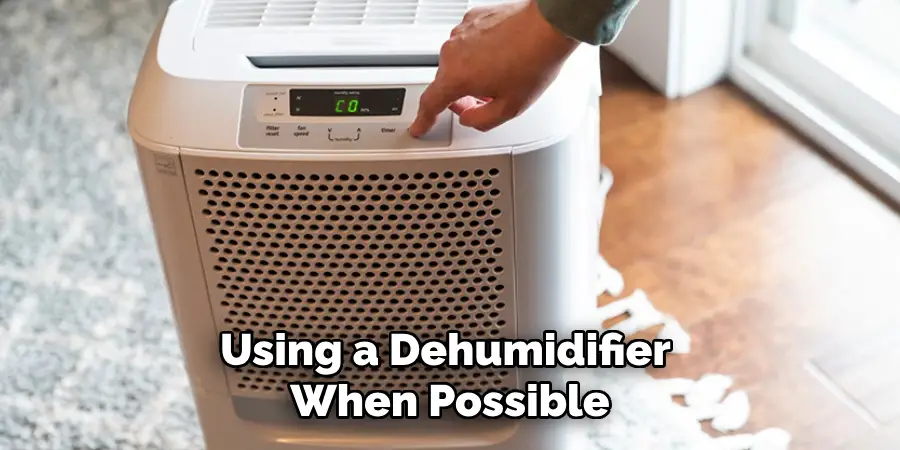
9. Maintain Proper Ventilation
Along with using a dehumidifier, proper ventilation is also key when storing a snow blower inside of enclosed space such as a garage during off-season periods. Make sure there is enough airflow circulating around the machine by leaving the door open slightly when possible or installing additional vent fans if available.
10. Check Regularly
Finally, don’t forget about checking regularly on stored items such as a snow blower during winter months ahead of time just in case something unexpected comes up, like rodent infestations or water leakage due to heavy rains, etc. Make sure everything looks alright every few weeks just in case anything needs attention right away!
Things to Consider When Storing Your Snowblower in the Garage
When winter comes to an end, it’s time to put away your snowblower until next year. But storing a snowblower properly is important in order to ensure that it remains in proper working condition for the next winter season. Here are some things to consider when storing your snowblower in the garage:
Clean and lubricate
Before storing your snowblower, it’s important to give it a thorough cleaning. Remove any built-up dirt or debris from the machine and make sure all moving parts are well lubricated. This will help prevent rust and corrosion during the storage period.
Drain fuel
It’s important to drain all of the fuel from your snowblower before storing it. If fuel is left sitting in the machine for an extended period of time, it can cause damage to the engine and make starting the snowblower difficult next winter.
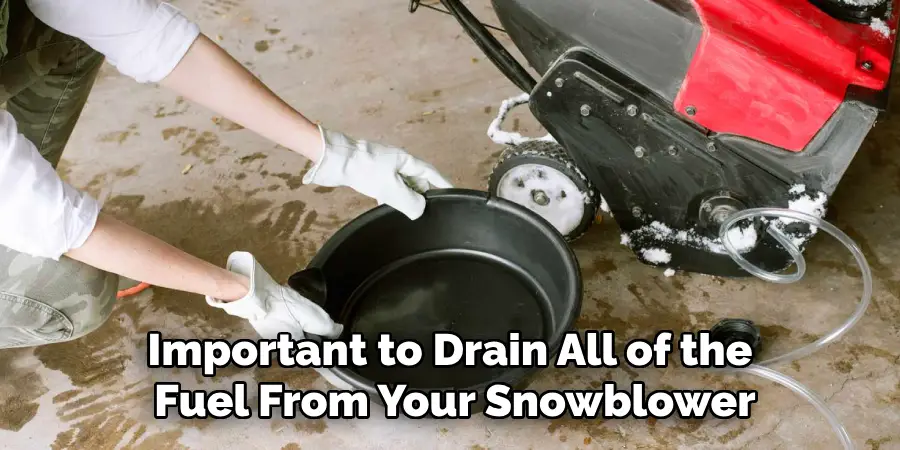
Store in a dry area
Make sure to store your snowblower in a cool, dry place. Moisture can cause rust and corrosion on metal parts, so avoid storing it in a damp area such as a basement or shed.
Protect from pests
To prevent rodents and other pests from making a home in your snowblower, consider placing mothballs or dryer sheets inside the machine before storing it. This will help keep unwanted critters away.
Cover it up
Using a cover to protect your snowblower during storage is highly recommended. This will help keep dust and debris from settling on the machine, as well as protect it from any potential scratches or damage.
Common Mistakes to Avoid When Storing Your Snowblower
Storing your snowblower in the garage may seem like a simple task, but there are some common mistakes that many people make. These mistakes can lead to damage or malfunction of your snowblower, resulting in costly repairs and inconvenience during the winter season.
To ensure that your snowblower is properly stored and ready for use when the snow starts falling, here are some common mistakes to avoid.
Not draining the fuel tank
One of the most common mistakes when storing a snowblower is leaving fuel in the tank during the off-season. Fuel can break down and become stale over time, which can cause starting issues or damage to your snowblower’s engine. It is important to drain the fuel tank completely before storing your snowblower for an extended period. If you are unable to drain the fuel, add a stabilizer to prevent it from breaking down.

Not cleaning and lubricating
Before storing your snowblower, it is essential to clean it thoroughly to remove any dirt or debris that may have accumulated during use. This will prevent corrosion and rust from forming on the metal parts. It is also important to lubricate any moving parts such as the auger and chute to prevent them from seizing up during storage.
Not storing in a dry and covered area
Leaving your snowblower outside or in an unprotected area can expose it to moisture, which can lead to rust and corrosion. It is best to store your snowblower in a dry and covered area, such as a garage or shed. If you must store it outside, make sure to cover it with a waterproof tarp to protect it from the elements.
Not removing the battery
If your snowblower has a battery, it is important to remove it before storing it for an extended period. The cold temperatures during the winter can cause the battery to drain and potentially freeze, which can damage it. Store the battery in a dry and warm place to keep it in good condition.
Conclusion
Storing your snowblower in your garage instead of leaving it out can be both practical and advantageous, keeping it from being damaged or collecting rust. With the proper items, it won’t take too much time to prepare the needed space for storing the snowblower.
On top of that, you’ll also need to add fuel stabilizer to the engine before storage. Making sure all loose screws and bolts are tightened up is just as important as well.
Following these steps will keep your snowblower in good shape throughout the off season, so you can fire it up again when winter comes and have a reliable snow removal machine at your disposal. Follow these simple instructions outlined in this blog post about how to store snowblower in garage, and you’ll be able to get the job done with ease.

